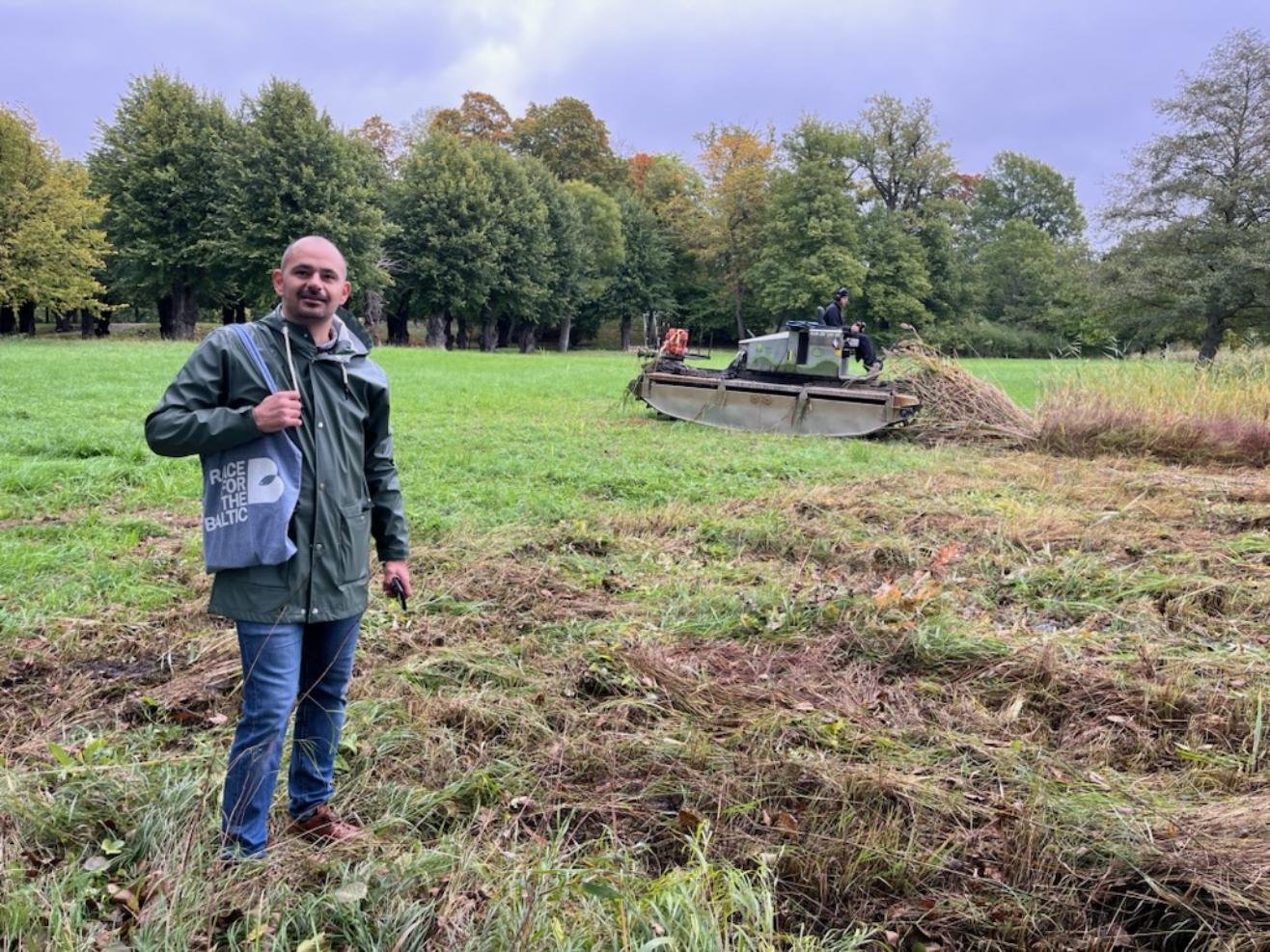Baltic reed: Value chains – research, analysis & preparation
Anil Ramel Singh on site visit at reed harvest managed by Svensk Vassklippning in September 2023. Photo: RFTB
A central aim of the project is exploring commercial applications of reed, such as roofs, insulation, drinking straws, animal fodder, soil improvement, and biochar. We are building a diverse network covering all aspects of reed product value chains, involving landowners, municipalities, NGOs, research institutes, and private companies. Extensive research includes market assessments, production chain mapping, cost structure analysis, and bottleneck identification. Plans for large-scale harvesting and product piloting across Sweden, Finland, and Åland involve 300 hectares, resulting in an uptake of approximately 3000 kg of phosphorus and 30 000kg of nitrogen.
One of the central aims of the project is to explore and understand commercial uses of reed. In several countries, reed is already being used in certain application areas today (for example; roofs, insulation, drinking straws), other areas are currently being explored (for example; animal fodder, soil improvement, biochar, biogas). The end product dictates when and how the reed should be harvested (summer, autumn or winter) and how it should be processed (dried, chopped, pressed, etc.). Apart from the benefit of recycling nutrients from reed in eutrophied coastal waters to land, there could be parallell benefits connected to several of these application areas, for example reducing emissions of CO2 and green house gas.
RFTB is developing a network of organizations, entrepreneurs and stakeholders, covering different parts of reed product value chains, The parties include land owners, municipalities, NGOs, research institutes and private companies. All parts of the value chain are important to consider; from planning for harvesting sites, to harvesting in a sustainable and efficient way, transport, processing and marketing.
Since the project started extensive work has been done in assessing market conditions, mapping out production chains, analysing cost structure and profitability and understanding bottle necks. The research is based on previous projects and studies, interviews, workshops and study visits. Parallell to evaluating the different commercial solutions, preparations are being made for harvesting and product piloting on a larger scale. During the project period harvesting of 300 hectares is planned in Sweden, Finland and Åland combined, resulting in an uptake of approximately 3000 kg of phosphorus and 30 000kg of nitrogen.

